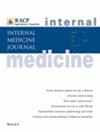Effect of adherence on asthma control: more patient knowledge, more adherence, more control
Abstract
Background
Low adherence rates in addition to inhaler misuse is a crucial problem in asthma management.
Aims
To investigate medication adherence and correct inhaler use and the relationship between adherence, asthma control and disease severity.
Methods
In this cross-sectional study, demographic characteristics of patients with asthma, asthma control and severe asthma rates were recorded. Patients were categorised as non-adherent, adherent to one component (either subjectively or objectively adherent), adherent to two components or full adherent based on objective, subjective and correct inhaler device use.
Results
The study included 304 patients with a mean age of 50.21 ± 12.53 years and disease duration of 12.67 ± 9.47 years. The rate of objective adherence, subjective adherence and correct inhaler use was 45.3%, 67.7% and 56.5% respectively. Overall, we found that 26% of the patients were non-adherent, 18.7% showed subjective or objective adherence, 28.8% adhered to two components, and 27% demonstrated full adherence. The risk of non-adherence was 3.1 times higher in uncontrolled patients, and regular clinician visits reduced the risk of non-adherence by 66%. Adherence was negatively associated with severe asthma rates in our cohort. The rate of correct inhaler device use was lower in patients with systemic comorbidities, while there was no difference in objective adherence, subjective adherence or full adherence.
Conclusion
The results of this study revealed that correct, consistent and regular use of inhalers in accordance with clinician recommendations is important in achieving control in patients with asthma. To increase adherence in asthma, regular clinician visits and repeat training should be encouraged.

 求助内容:
求助内容: 应助结果提醒方式:
应助结果提醒方式:


